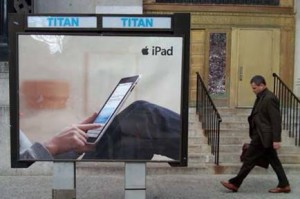 There is a lot of chatter out there about the concept of ‘failing fast’ as a way of fostering innovation and reducing risk. Sometimes the concept of ‘failing fast’ is merged with ‘failing cheap’ to form the following refrain – ‘fail fast, fail cheap, fail often’.
There is a lot of chatter out there about the concept of ‘failing fast’ as a way of fostering innovation and reducing risk. Sometimes the concept of ‘failing fast’ is merged with ‘failing cheap’ to form the following refrain – ‘fail fast, fail cheap, fail often’.
Now don’t get me wrong, one of the most important things an organization can do is learn to accept failure as a real possibility in their innovation efforts, and even to plan for it by taking a portfolio approach that balances different risk profiles, time horizons, etc.
The problem that I have with all of this chatter about failing fast is that does not take into account the power of language. The language focuses people on failing instead of on the goal – learning. My friend Stefan Lindegaard has recognized this and has incorporated learning into his ‘smartfailing’ approach. But even this approach misses the mark by remaining focused on failure.
When it comes to innovation, it is not as important whether you fail fast or fail slow or whether you fail at all, but how fast you learn.
“The startups that learn the fastest win.” — Eric Ries
And make no mistake, you don’t have to fail to innovate (although there are always some obstacles along the way). With the right approach to innovation you can learn quickly from failures AND successes.
The key is to pursue your innovation efforts as a discrete set of experiments designed to learn certain things, and instrumenting each project phase in such a way that the desired learning is achieved.
The central question should always be:
“What do we hope to learn from this effort?”
When you start from this question, every project becomes a series of questions you hope to answer, and each answer moves you closer to identifying the key market insight and achieving your expected innovation. The questions you hope to answer can include technical questions, manufacturing questions, process questions, customer preference questions, questions about how to communicate the value to customers, and more. AND, the answers that push you forward can come from positive discrete outcomes OR negative discrete outcomes of the different project phases.
The ultimate goal of a ‘learning fast’ approach to innovation is to embed in your culture the ability to extract the key insights from your pursuits and the ability to quickly recognize how to modify your project plan to take advantage of unexpected learnings, and the flexibility and empowerment to make the necessary course corrections.
The faster you get at learning from unforeseen circumstances and outcomes, the faster you can turn an invention into an innovation by landing smack on what the customer finds truly valuable (and communicating the value in a compelling way). Fail to identify the key value AND a compelling way to communicate it, and you will fail to drive mass adoption.
Let’s look at a quick example of learning faster what the keys to market success are (using Apple):
Apple launched the iPod 2-3 years before they launched the Windows version of iTunes. Apple launched the Motorola ROKR two years before they launched the iPhone. The iPhone came out one year before the AppStore was launched. And finally, it took Apple only about three months to move from talking about the iPad using the tagline “Our most advanced technology in a magical and revolutionary device at an unbelievable price.” to showing people with their feet up, leaning back using the iPad. All of the solution components lists unlocked mass adoption of an Apple solution, but took Apple time to discover and learn. Do you see a trend? Even if you don’t see a trend of Apple learning faster, I’m sure you recognize the up and to the right trend in Apple’s stock price.
In contrast, Microsoft recognizing the Kin mobile phones were a flop and pulling them from the market was a great example of failing fast. The Kin however is not an example of learning fast.
So, please, please, please, don’t talk to your teams about a need to ‘fail fast, fail cheap, fail often’. Focus their energies instead on uncovering how they can instrument for learning and accelerate their ability to learn and adapt whether project phases succeed or fail.
Happy innovating!

 Sign up here to get Human-Centered Change & Innovation Weekly delivered to your inbox every week.
Sign up here to get Human-Centered Change & Innovation Weekly delivered to your inbox every week.
![]() Sign up here to get Human-Centered Change & Innovation Weekly delivered to your inbox every week.
Sign up here to get Human-Centered Change & Innovation Weekly delivered to your inbox every week.
 There is a lot of chatter out there about the concept of ‘failing fast’ as a way of fostering innovation and reducing risk. Sometimes the concept of ‘failing fast’ is merged with ‘failing cheap’ to form the following refrain – ‘fail fast, fail cheap, fail often’.
There is a lot of chatter out there about the concept of ‘failing fast’ as a way of fostering innovation and reducing risk. Sometimes the concept of ‘failing fast’ is merged with ‘failing cheap’ to form the following refrain – ‘fail fast, fail cheap, fail often’. Innovation is about change. Companies that successfully innovate in a repeatable fashion have one thing in common – they are good at managing change. Now, change comes from many sources, but when it comes to innovation, the main sources are incremental innovation and disruptive innovation.
Innovation is about change. Companies that successfully innovate in a repeatable fashion have one thing in common – they are good at managing change. Now, change comes from many sources, but when it comes to innovation, the main sources are incremental innovation and disruptive innovation.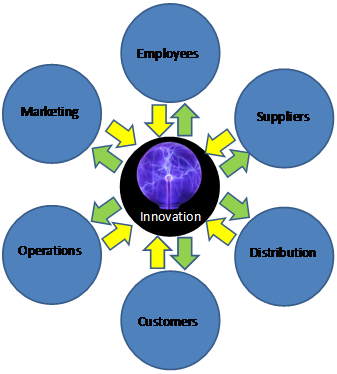
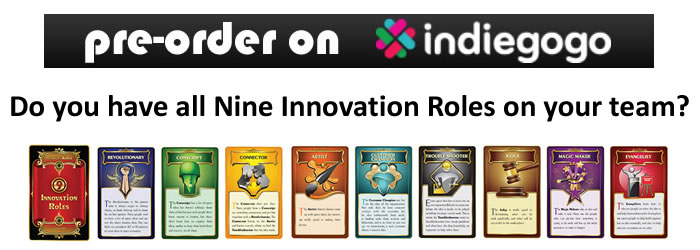
 Note that the chart has arrows going in both directions, but not simultaneously. There is a push-pull relationship. At the beginning of the innovation process the satellites influence what the innovation will look like (new production capabilities, new suppliers, ideas from partners/suppliers, component innovations, new marketing methods, etc.). But as the innovation goes into final commercialization, the direction of the change becomes outwardly focused.
Note that the chart has arrows going in both directions, but not simultaneously. There is a push-pull relationship. At the beginning of the innovation process the satellites influence what the innovation will look like (new production capabilities, new suppliers, ideas from partners/suppliers, component innovations, new marketing methods, etc.). But as the innovation goes into final commercialization, the direction of the change becomes outwardly focused.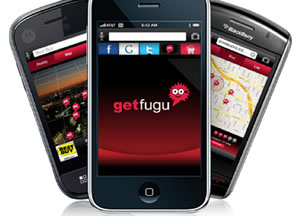 Nobody, including people inside Microsoft, would argue with the fact that Microsoft beat Google and Apple to the Mobile OS marketplace, but lags them both in terms of market share.
Nobody, including people inside Microsoft, would argue with the fact that Microsoft beat Google and Apple to the Mobile OS marketplace, but lags them both in terms of market share.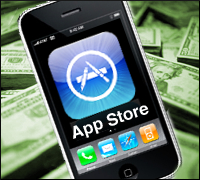 This is the seventh of several ‘Innovation Perspectives’ articles we published in 2009 from multiple authors to get different perspectives on ‘What is the most dangerous current misconception in innovation?’. Now, here is my perspective:
This is the seventh of several ‘Innovation Perspectives’ articles we published in 2009 from multiple authors to get different perspectives on ‘What is the most dangerous current misconception in innovation?’. Now, here is my perspective: While most individuals and organizations natural reaction to an economic downturn is fear and retrenchment, they also present a time of great opportunity.
While most individuals and organizations natural reaction to an economic downturn is fear and retrenchment, they also present a time of great opportunity.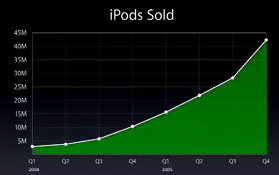
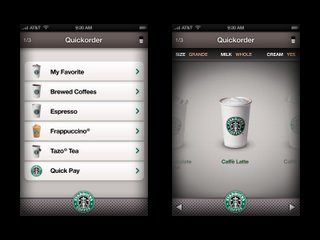 I came across a queue reduction application for the iPhone and iPod Touch four years ago that was intriguing. At the time it looked like the application wasn’t quite finished or certified for use yet by Apple and Starbucks, but from what I gathered at the time it was meant to work something like this:
I came across a queue reduction application for the iPhone and iPod Touch four years ago that was intriguing. At the time it looked like the application wasn’t quite finished or certified for use yet by Apple and Starbucks, but from what I gathered at the time it was meant to work something like this: